Armored vehicles of Germany in the Second World War. Part of 1. The first steps
As you know, Germany lost the First World War outright. In the post-war period, its fate was determined by the signature on 28.06. 1919 representatives of the main "united" and allied powers of the Treaty of Versailles. Now the strength of the German armed forces could not exceed 100 thousand people (seven infantry and three cavalry divisions). It was forbidden to have, make and buy all types of offensive weapons: first of all, Aviation, heavy artillery, large warships, and much more.
However, this article is about tanks. What does the contract say about them? Article 171 of the Versailles Peace Treaty read: "It is equally forbidden to produce and import into Germany tanks, armored cars or any other similar vehicles, can be used for military purposes." The tanks in German combat units — captured English and A7V — were handed over to the winners, even under the terms of the ceasefire on 11.11.1918/XNUMX/XNUMX. However, several armored vehicles designed to suppress the riots were left on the police equipment.
The Germans, even despite the observation of the Allied Commission, dismantled prototypes of light vehicles and giant tanks of type "K". To hide their secrets, they destroyed (perhaps hid?) All the documentation. Here is the little information that is known today.
So, Germany has lost its tank backlog. Of course, the leaders of the Reichswehr and the Reichswehr - the post-Versailles armed forces - could not and did not want to put up with this situation. There was only one thing left - to develop tanks in secret. But how and where?
Designers were easier, because they were free people. O. Merker and J. Vollmer traveled abroad where they worked to strengthen the defense of Sweden. At the plant of Landsverk, taking the construction of the prototype LKII as a basis, they created Strv m / 21. Ten of these machines were already released in 1921. After eight years, the tanks were upgraded. Instead of an engine with power 60 hp put 85-strong (both located in the front of the case). Protection was enhanced, the thickness of the armor was 14 millimeters. The improved chassis of the car made it possible to reach speeds of up to 18 km / h with a power reserve of 70 km. The tank weight was 9,5 tons. The crew consisted of four people. In addition to the 37-millimeter cannon and machine gun in the tower in the case was installed another machine gun. These tanks served until the Second World War.
Soon Vollmer moved to Czechoslovakia. There, in the middle of the 1920-s, he created and tested KN50 and KN60 wheeled / tracked tanks. Being alone, in 34, Merker offered the light La-100, and later La-60, which was considered the most successful Swedish machine. It was on this machine that the individual torsion bar suspension rollers were used for the first time. Several modifications of this machine were produced in wartime, on the basis of the tank created self-propelled gun mounts. She also became a prototype for a Hungarian-made Toldy light tank.
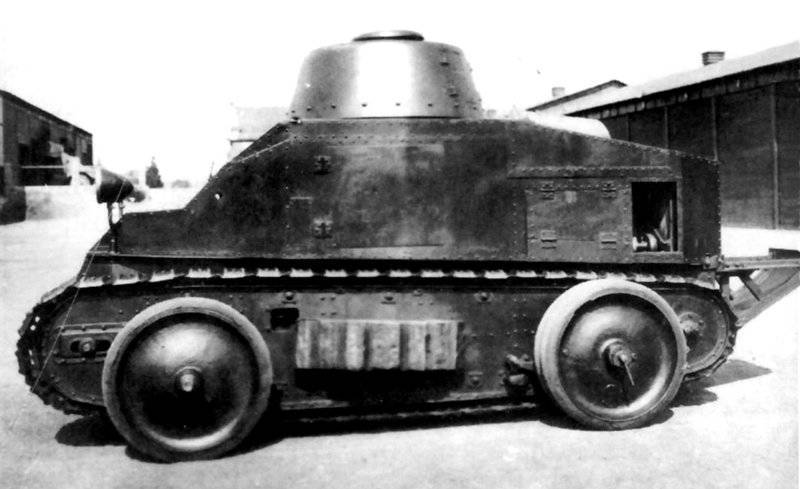
It was more difficult for politicians and the military of Germany. In their revanchist aspirations, they even sought not an ally, but a sympathizer. And it was precisely such a sympathizer that Soviet Russia, which was not among the winning countries, became. On the contrary, the Red Army itself had to repel the intervention of the Entente. Especially after the civil war, Soviet Russia found itself in economic and political isolation.
This deal promised both sides decent dividends. The first wanted with the help of the military alliance around the Treaty of Versailles. The second relied on assistance in the formation and enhancement of the defense potential.
We omit the details of the negotiation process and continue the story with 1926, when the organization of three training and testing centers began in the USSR. A tank school with a training ground (codename “Kama”) was located in Kazan. Her work continued until 15.09.1933. At various times, Lieutenant Colonel Malbrandt, Majors Garpe and Radlmayer stood at the head of the school.
In July, 1929 in the Kama field camp began intensive training and testing of machines. It may be asked what tanks were going to run in, if Germany did not officially have tanks, and the production of Soviet tanks "Small escort" just started to build?
It turns out that test facilities were already ready by this time. They were taken to the place under the guise of agricultural equipment. The leadership of the Reichswehr back in 1925 ordered three companies - Daimler-Benz, Rheinmetall-Borsig and Krupp - to design and manufacture a pair of medium tanks weighing about 20 tons. To disguise, they announced that the construction of "large tractors" was underway. The following year, the first Rhein-Metal prototype was created.
Firms Rheinmetall Borzig and Krupp reported for the first cars in 28, and for the latter, in 29. Due to numerous defects, Dimler models were delayed for almost a year. The final assembly of all machines was carried out in Unterlus at the Rheinmetall-Borsig plant.
The Krupp and Rhein Metal machines had a weight of 19,3 tons, the power reserve was 150 km. The carburetor six-cylinder 250-powerful BMW Va engines made it possible to reach speeds up to 40 km / h. Daimler "tractors" in speed did not lag behind them. Although with a mass of 15 tons and an engine power 255 hp of their own production, they had the best power density which was 17 hp / t. It must be admitted: for the 20s of the last century, these were very good characteristics.
The armament of the tanks consisted of 75-mm short-barreled guns (24 caliber length) equipped with 104 rounds of ammunition and three 7,92-mm machine guns, one of which was paired with a cannon having ammunition from 6000 cartridges. Crew - six people. The main structural material was 13-mm non-armor steel.
Regarding the “light tractors” (should be read, light tanks), then Rheinmetall-Borzig and Krupp firms received an order for them in 1929 of the city. Krupp samples with different suspension systems were created in 31-32. They were installed 37-millimeter cannon in a rotating turret. The weight of the tanks was 7,9 tons. Crew - three people. All light tanks visited the Kama. After that, they returned to Germany, where they took part in the maneuvers of the First Tank Division.
Rheinmetall-Borsig firm built its own two different types of light machines, the armor of which was made of mild steel, built only in 34-m: self-propelled installation and a tank with a tower (in the USSR, of course, it did not hit). Their combat weight was 8 and 9,5 tons, respectively. Both cars were equipped with the same 100-strong engine. In addition to 37-mm guns (length 45 gauges), each machine was armed with a machine gun.
In 1927 — 1928, the development of self-propelled gun mounts was secretly conducted. It is known at least about one sample with the 37-gun covered by a shield. Only the engine was armored and most likely mild steel. Company Hanomag offered a more advanced model. The base served as a tractor "Wendeler and Dorn." The total mass of 6,8 tons. The 77 millimeter lightweight 1896 / 1916 model gun mounted on the bollard provided circular shelling. 50-strong carburetor engine allowed to reach the speed of 6 kilometers per hour. Apparently, these machines in Kazan was not.
Some of the technical achievements of Germany migrated to the design of tanks of the Soviet Union. For example, the T-28 received a Krupp suspension; T-28, T-35 - accommodation in the bow of the crew; T-26, T-28, BT - welded shells, sights, surveillance devices, radio and electrical equipment, pairing machine guns and implements.
Direct cooperation between the German and Soviet engineers also developed. So, at the beginning of the 1930-x in Leningrad worked Grotto, who created the average tank TG. However, this machine was not accepted for production just because of the complexity of the design. But it was implemented many interesting innovations. At a speed of 35 km / h and a combat mass of 25 tons, it had excellent armament: 37-, 76-mm cannon and four machine guns. 11 crew man defended 50-mm armor.
Y. Vollmer also worked for the Soviet Union. However, he did not come to the country, but sent the drawings, regularly receiving payment for them. Where his projects were used has not yet been documented.
From the Kazan school the Soviet side tried to take the maximum possible. According to the report of the deputy. The Chief of the Mechanization and Motorization Directorate of the Workers 'and Peasants' Red Army, Corps Commander Gryaznov, the People's Commissar of Defense Voroshilov, managed to skip “... 65 people of the mechanized and tank forces with a significant percentage of combatant commanders” through the school. Tenants had more modest learning outcomes. 30 German tank officer officers completed a full training course at Kama. Some of those trained in the USSR later became very large military leaders. For example, in Kame, Ritter von Thom was trained - commander of a tank unit of the Condor Legion in 1936 in Spain, general of tank forces, commander in 1942 in the German African corps. Colonel-General Josef Harpe - Commander of the Fourth Tank Army. Obergruppenführer Wilhelm Bittrich - Commander of the Second SS Panzer Corps.
Major G. Guderian, who at that time served in the Automotive Section of the Reichswehr, also came here. True, not as a student (many historians hold this opinion), but as an inspecting person. During the trip, Guderian and Captain Pirner discussed the design features of tanks delivered just to the USSR.
In combat vehicles, he was interested in everything. Noting the successful ones. solutions (good maneuverability and maneuverability, circular firing from machine guns and cannons), he was more interested in shortcomings: why there are no radio stations, why the commander’s place was installed next to the driver in the front part, due to which he does not have a circular and side view.
Guderian's heightened curiosity is easy to explain. Bearing a prototype of the future tank divisions, Guderian was looking for two types of tanks suitable for them: the main one is relatively light, having an anti-tank gun, and the middle one having a short-gun for art. support the main tanks. Looking for a suitable version of the combat vehicle, the motorist officer even made a monthly visit to Sweden, where he visited the Second Guard Battalion. Guderian personally mastered the Strv m / 21 tanks that were in service with him.
And G. Guderian “fell ill” with tanks when he got acquainted with the works of the “mechanized” war enthusiasts - the Frenchman S. De Gaulle and the British B. Liddel-Garth, J. Fuller. He was literally absorbed in the idea of creating and independent use of tank forces.
Judging by the memoirs of Guderian, at first he could not find understanding, and for a long time he was the only specialist in this field. Mr. Guderian even made fun of himself: "Among the blind there is the one-eyed king." Over time, he managed to move things off the ground. Among the officers of the seven automobile battalions that were part of the Reichswehr were like-minded people.
At the initial stage, the most acceptable was acquaintance with the theory, which caused obvious skepticism. At the same time, the English regulations of tank driving were studied. During practical exercises plywood silhouettes of tanks with bicycle wheels pushed by soldiers were used. Later layouts rearranged on car chassis.
The real preparation for the creation of armored troops began in October 1931, with the appointment of G. Guderian as chief of staff for the inspection of automobile troops. In the summer of next year, the first exercises with an infantry regiment were held in training camps, with the support of a battalion of tank mock-ups. This process sharply accelerated the arrival of A. Hitler to power.
The transformation of cavalry regiments into motorized infantry began. In the cities of Ordruf and Zossen, future tankers' driving schools continued to teach driving on tracked tractors, which in many ways were close to combat vehicles. Various companies soon put about a dozen prototypes of light tanks.
These machines in official documents continued to be called agricultural tractors LaS (Landwirtschaftlicher Schlepper). Truth be told, it was just a chassis without a superstructure and turret, but with 13-mm armor. The open case allowed to accommodate the instructor and four students. These machines, in addition to schools, were equipped with the first two formed tank regiments. In the summer of 1934, Mr. Hitler was shown in miniature, which is a mechanized troops. The squad included platoons of anti-tank guns, motorcyclists, “LaS tanks”, medium and light armored vehicles. “This is what I need. I want to have exactly this, "said the Führer, admiring the smooth and quick actions of representatives of different kinds weapons.
He was also ordered to create a Panzerwaffenamt (Armored Forces Directorate). Its head was Lieutenant-General O. Lutz, and Colonel G. Guderian became Chief of Staff. Both were bound by a joint service and a long-standing friendship, which allowed in a single tandem to take on the assigned area of work. Therefore, it is not surprising that Lutz suggested adding a third type of combat vehicle to the two “Guderian’s” - a light reconnaissance tank with an 20-mm automatic cannon and a machine gun.
General L. Beck, the future chief of the main headquarters of the Wehrmacht land forces, was still incredulous about tanks, giving them the role of escorting infantry, and then at best. (According to the Versailles Treaty, the General Staff was forbidden to have in the Reichswehr. In the ground forces, its functions were carried out by troop control with departments: organizational, operational, for the study of combat training and foreign armies).
But G. Guderian O. Lutz stood his ground, relying on the Reich Chancellor who is a supporter of the speedy creation of panzervaffe. And then the former members of the Entente weakened the severity of the Treaty of Versailles. Germany in March 1935 officially denounced prohibiting articles, i.e., it again received military sovereignty.
Now, the Wehrmacht (armed forces of Nazi Germany), uncontrolled by the treaty, began to rapidly gain strength. In the first summer of its formation, four-week exercises of the experienced tank division of M. von Wykes (Weichs) were held, which gathered all the tank units that existed at that time, under their banners.
The first persons of the military department, Colonel-General V. von Blomberg, the minister, and V. von Fritsch, the commander-in-chief of the land forces, observed the exercise. The successful completion of the exercise was announced by a yellow aerostat lifted into the air. General V. Fritsch commented on this point that the balloon lacked the inscription: “Guderian’s tanks are the best.”
Sown grain quickly sprouted. The most famous engineering companies received an order for the development and creation of medium and light tanks in large quantities. October 15 Three tank divisions were formed in 1935: First in Weimar — Commander Wyx; Second in Würzburg (later redeployed to Vienna) — Commander Guderian and Third in Berlin — Commander General Fessemann.
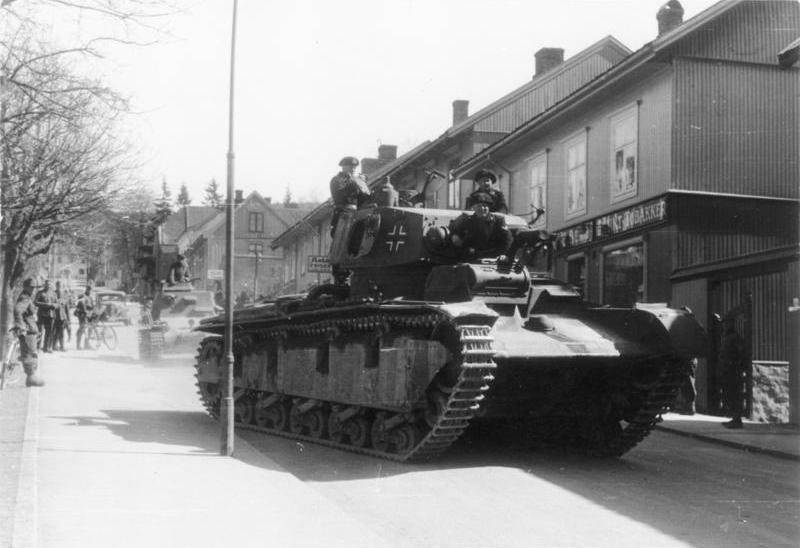
The cavalry command also wanted to have tanks at its disposal, so it acquired three (later and fourth) light divisions. In the winter of 40, they were reorganized into a tank one.
Only General Beck, in matters of using armored vehicles in battle, continued to stand his ground and demanded that two tank brigades be formed. These formations were for some time in the reserve of the High Command, and later served as the basis for new tank divisions.
Thus, the losers of the First World War, the Germans (many of the leaders believed that it was because of the tanks) this time it was on them that they relied on new military campaigns. The winners, on the contrary, even despite the previous priority in theoretical developments, lagged behind hopelessly. They considered tanks only as an appendage to the infantry, for which they paid.
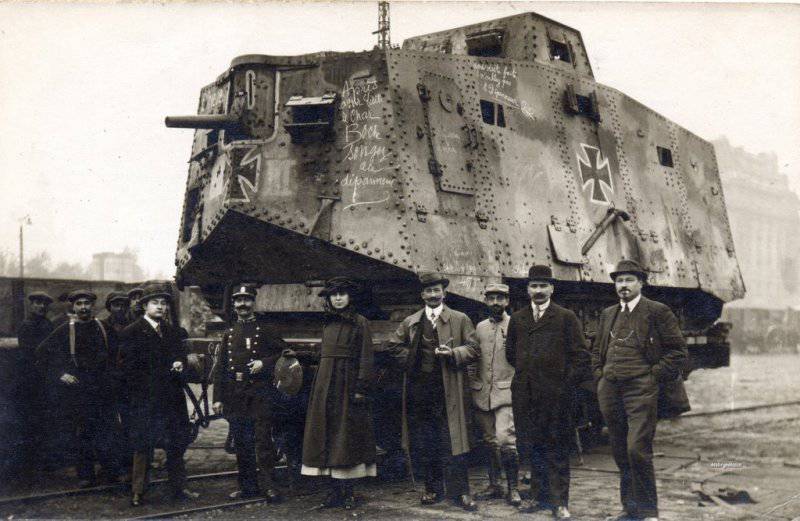
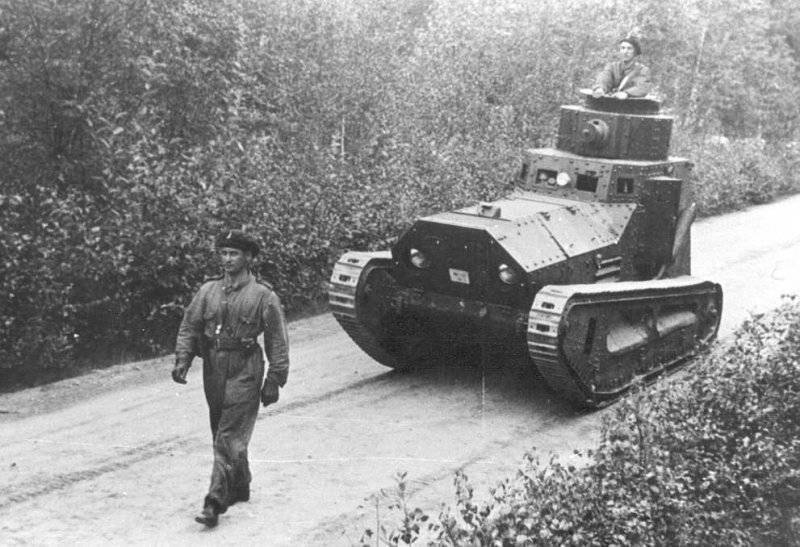
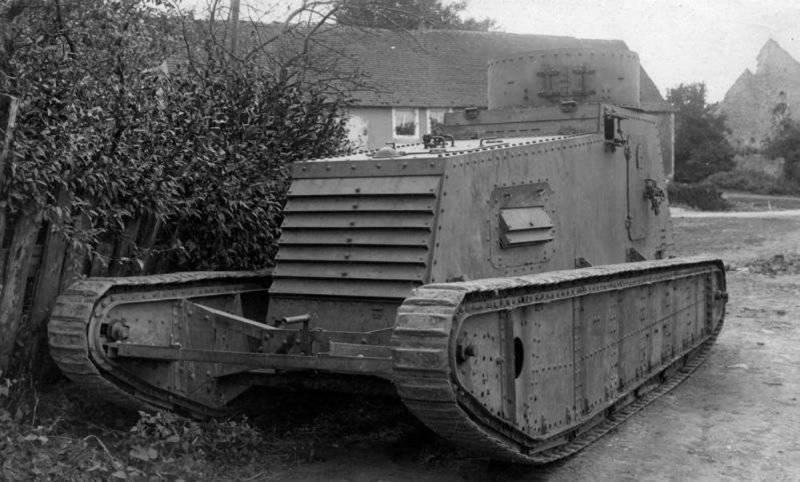
Information